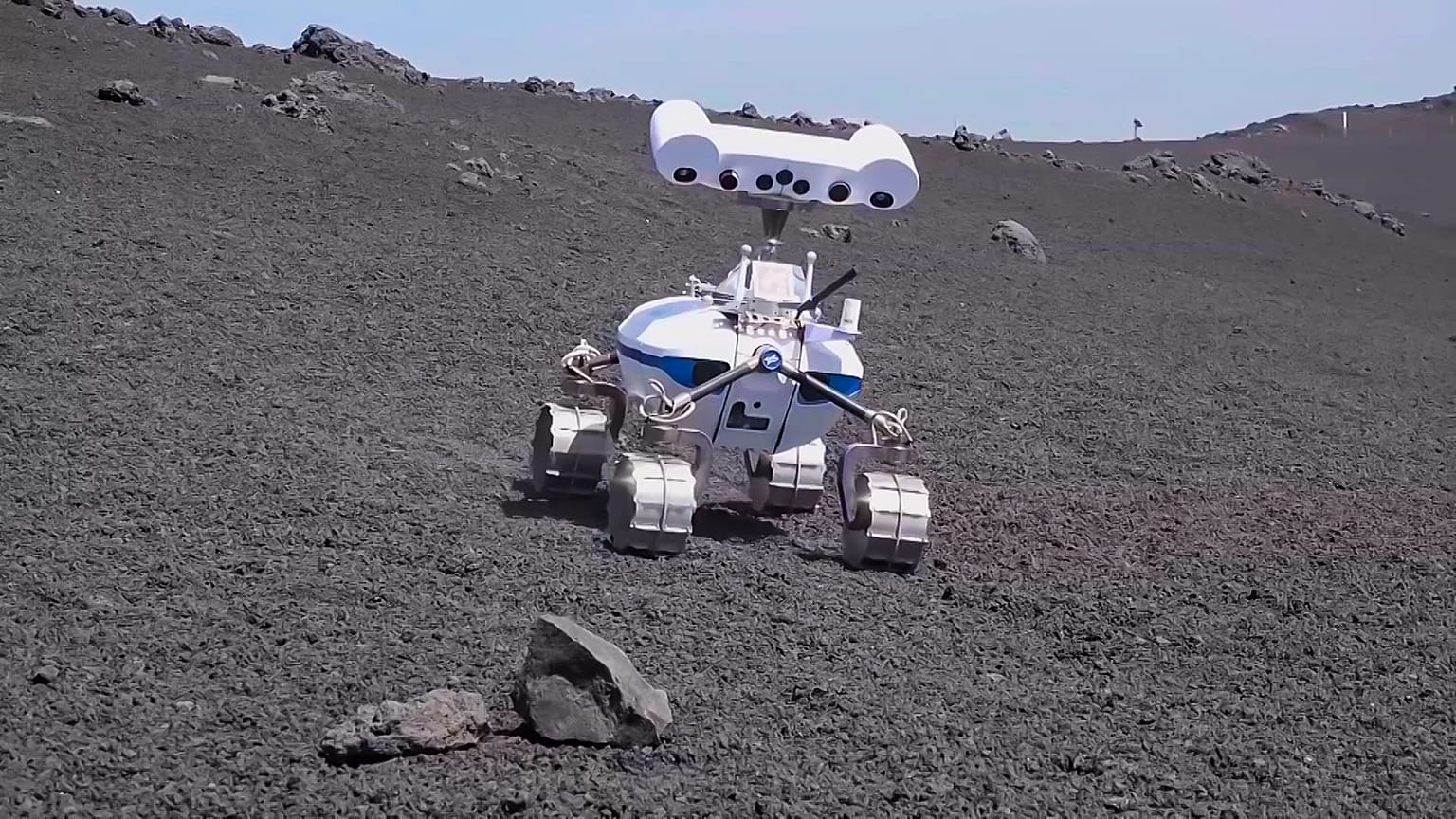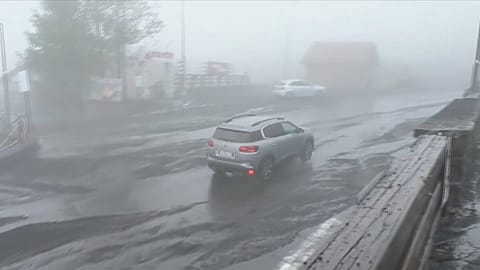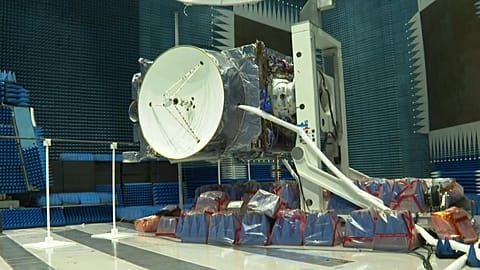The rovers, equipped to “feel” everything they touch, could be deployed from a future lunar orbital outpost to carry out tasks on the surface of the Moon.
 ADVERTISEMENT
ADVERTISEMENT
Raging winds, dusty harsh terrains - this isn't an alien planet, it's Mount Etna on the Italian island of Sicily.
Experts from the European Space Agency (ESA) and DLR, the German Aerospace Center, have scaled this volcanically active mountain to try out some of their latest robotics technology.
The goal of these "Analog-1" tests is to investigate whether astronauts orbiting in a space station can control rovers exploring planet surfaces below.
Thomas Krueger and his team from the Human Robot Interaction Lab built a rover that uses haptic feedback, so the controller can "feel" whatever the rover touches.
"With haptic feedback, you indeed would feel what the robot feels," Krueger said. "So, if you move our haptic device and the robot touches an obstacle, you indeed feel the touch. And this allows the operator to do more fine-grained tasks that are not possible without haptic feedback".
Roving around ‘moon-like’ Etna
To put their creation to the test, scientists arranged a live trial last week where the rover was commanded using wireless connectivity from the city of Catania, some 23 kilometres away.
The rover roamed around a 500 square-metre area at 2,600 m altitude on the slopes of Etna. Mount Etna was selected because of its similarities to the lunar surface.
"This is one of the first times we put our robot in a really harsh environment here on Mount Etna. So, it's moon-like, we have a complex scenario with the operations centre in the background, the astronaut, the time delay in the control centre, and indeed a task that has been prepared by the team," said Krueger.
"If we master this, we are really confident that these technologies can be developed further to make it space grade, to indeed be part of the next moon mission".
It's not the first time ESA has simulated this kind of remote rover experiment.
In 2019, Italian astronaut Luca Parmitano, in orbit aboard the International Space Station, controlled a rover on a simulated moonscape within a hangar in the Netherlands.
This time, German astronaut Thomas Reiter controlled the rover from a hotel room in Catania, simulating the international Lunar Gateway station in orbit around the Moon.
ESA's ESOC mission control centre in Germany adopted the role of ground control, coordinating interactions between the astronaut and scientists.
"Traditionally, rovers are operated from the Earth," said Kjetil Wormnes, the experiment's project manager.
"With the Lunar Gateway being put in place around the Moon, there's the possibility of controlling them directly with a much smaller time delay. And this opens up new possibilities for things that you simply cannot do or are much more difficult to do from the Earth".
Next stop: a Moon-orbiting space spation?
NASA is planning to put a space station called Gateway into lunar orbit, from which astronauts can descend to the Moon's surface as part of its Artemis program.
The European Space Agency says it has agreed to provide several modules for NASA's planned Moon outpost, in return for a chance to send European astronauts to the lunar orbiter.
NASA aims to use Gateway as a staging post for missions to the Moon and eventually Mars.
And the team on Mount Etna believe some future lunar exploration tasks will be performed by rovers, rather than astronauts.
"It's certainly less dangerous to send the rover to the surface than to send an astronaut. It's also cheaper. It's also possible to not take up so much of their time," said Wormnes.
"Astronaut time is extremely valuable, so you can send a rover to the surface, you can let the ground team do all their planning, let them do all the longer traverses. And you get the astronaut involved when it's necessary for maybe the more complex tasks or the things where direct teleoperation, direct control of the robot is more helpful".
The experiment ran until Friday 1 July.
For more on this story, watch the video in the media player above.

















